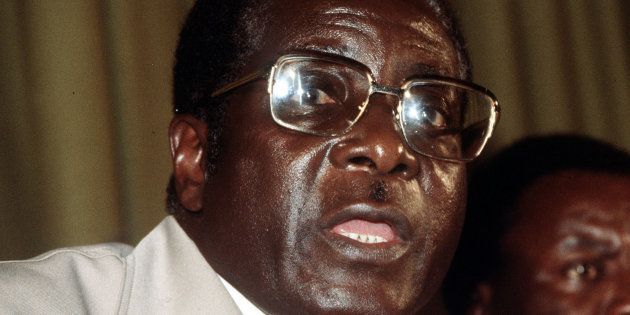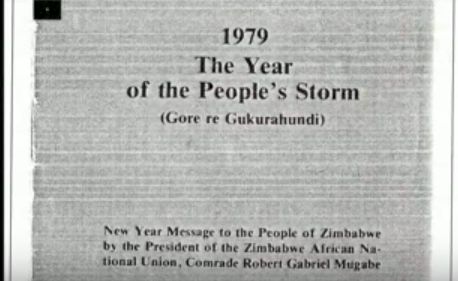
Zimbabwe's "Gukurahundi" ("The wind that wipes away trash") from 1983 to 1987 not only led to the deaths of thousands of Ndebele citizens, but also entrenched the rift of tribalism within the country, pitting Mashona against Ndebele.
The massacre has been blamed on former Zimbabwean president Robert Mugabe, who is believed to have ordered the genocide to eliminate Joshua Nkomo's supporters.
Nkomo was the leader of the Zimbabwe African People's Union (Zapu), one of the two main organisations that fought the bush war against the white-supremacist Rhodesian state, alongside Mugabe's Zimbabwe African National Union (Zanu), which originated from a political rift in Zapu in 1963.
After liberation, Nkomo became Mugabe's toughest competitor –– because Zapu won enough votes to become the official opposition, but also because Nkomo was revered as the original father of the African nationalist movement in the country.
Tens of thousands of people were killed during the Gukurahundi, a suppression campaign waged by the Zimbabwe Defence Force's North Korean-trained Fifth Brigade.
Mugabe has on several occasions denied any involvement in the killings, but there is widespread evidence that he was behind them.
Zanu released a New Year's message in 1979 in a booklet entitled: "The Year of The People's Storm, Gore re Gukurahundi".
In it, Mugabe said the following: "Let every settler city, town or village –– let every enemy post, nook and hiding place be hit by the fury of the people's storm. The people's storm must come with thunder, heavy rain and irresistible blasting guns that will ransack the enemy's strongholds. Let us call this year the year of the people's storm; 'Gukurahundi'."
Although the message appeared to be directed at the white supremacist Rhodesian government, Mugabe later referred to the army as "Gukurahundi" when he used the ZDF to wipe out Nkomo's Ndebele support base.

In 1982, Zapu was accused of hatching a plot to overthrow the government, and Nkomo, at the time minister of home affairs in a unity government, was fired.
Mistrust between the two sides escalated to the point where Nkomo was forced into exile in 1983, after which the sustained operation aimed at wiping out the Ndebele was begun in earnest.
Fifth Brigade death squads would march into Ndebele villages, round up anyone suspected or accused of being anti-Zanu, and force them to dig their own graves before executing them. Conservative estimates put the number of civilian deaths at around 8,000, but Ndebele sources insist it was closer to 20,000 or 30,000.
Nkomo first fled to Botswana, but his stay was short-lived. He moved on to London, where he would spend the rest of his exile.
The killings only ended with the signing of the Unity Accord in 1987 between Zanu and Zapu, which amalgamated the two parties to form Zanu-Patriotic Front (Zanu-PF), the party that has clung to power by hook or by crook ever since.
Mugabe and Nkomo finally settled their differences in 1987, when Nkomo returned to Zimbabwe to become one of two vice-presidents.
However, many in Matabeleland accused him of selling out; a claim which Nkomo denied until his death due to prostate cancer in 1999.
He insisted that making peace with Mugabe in 1987 was the only way to prevent Zimbabwe's Ndebele citizens from being wiped out completely, even though the absorption of Zapu into Zanu-PF effectively made Zimbabwe a one-party state, ruled autocratically by Mugabe and his Shona allies.
